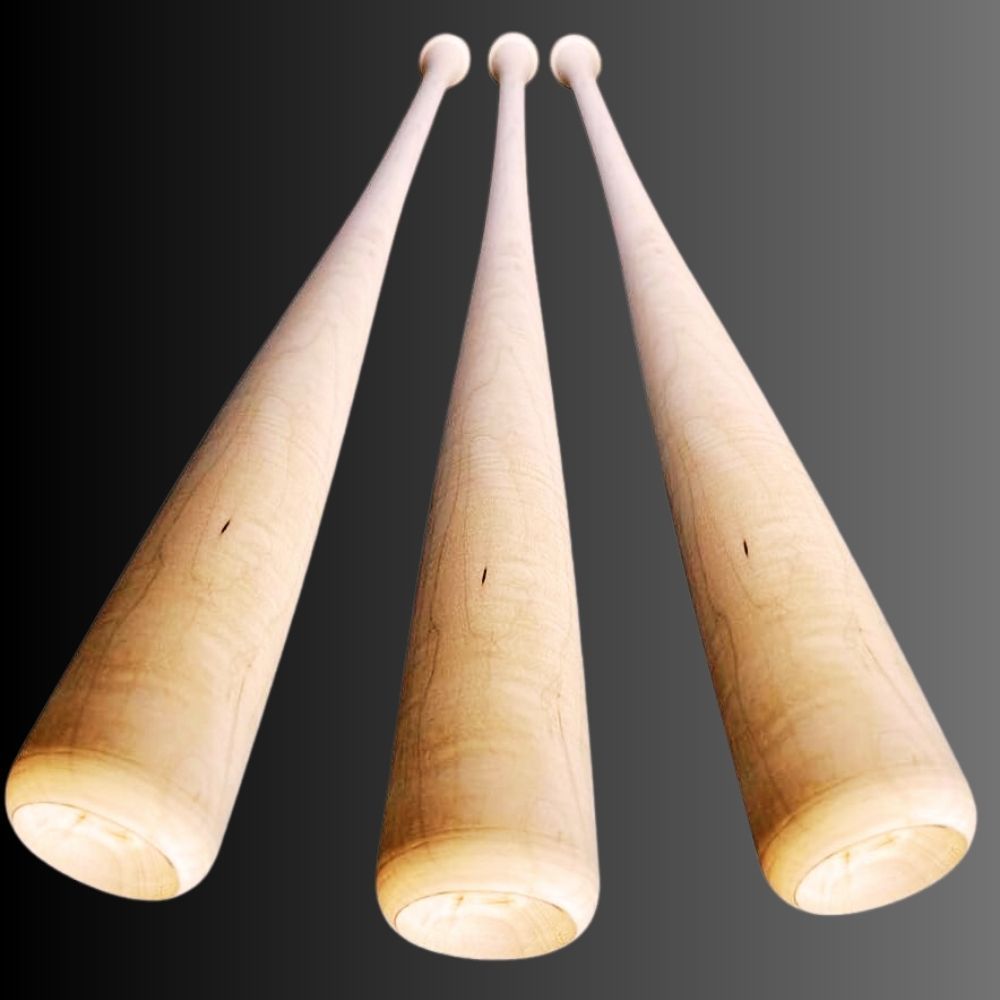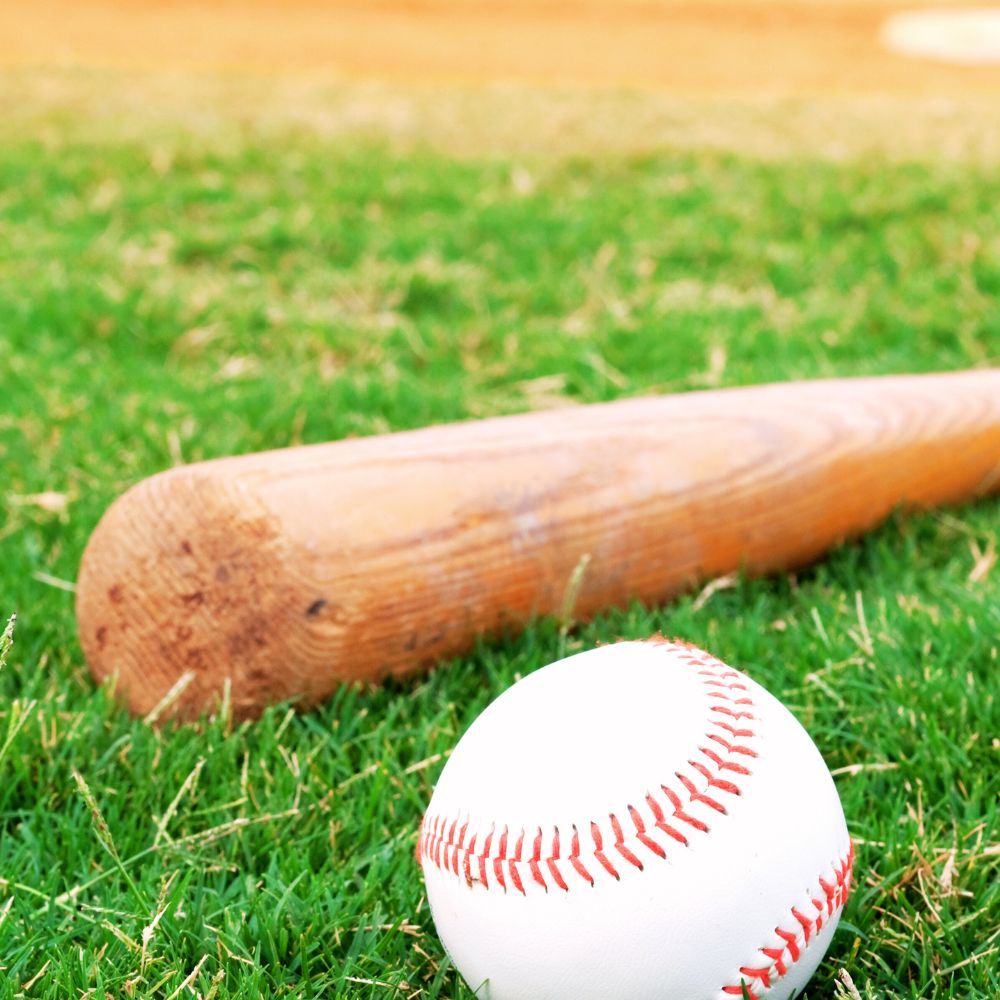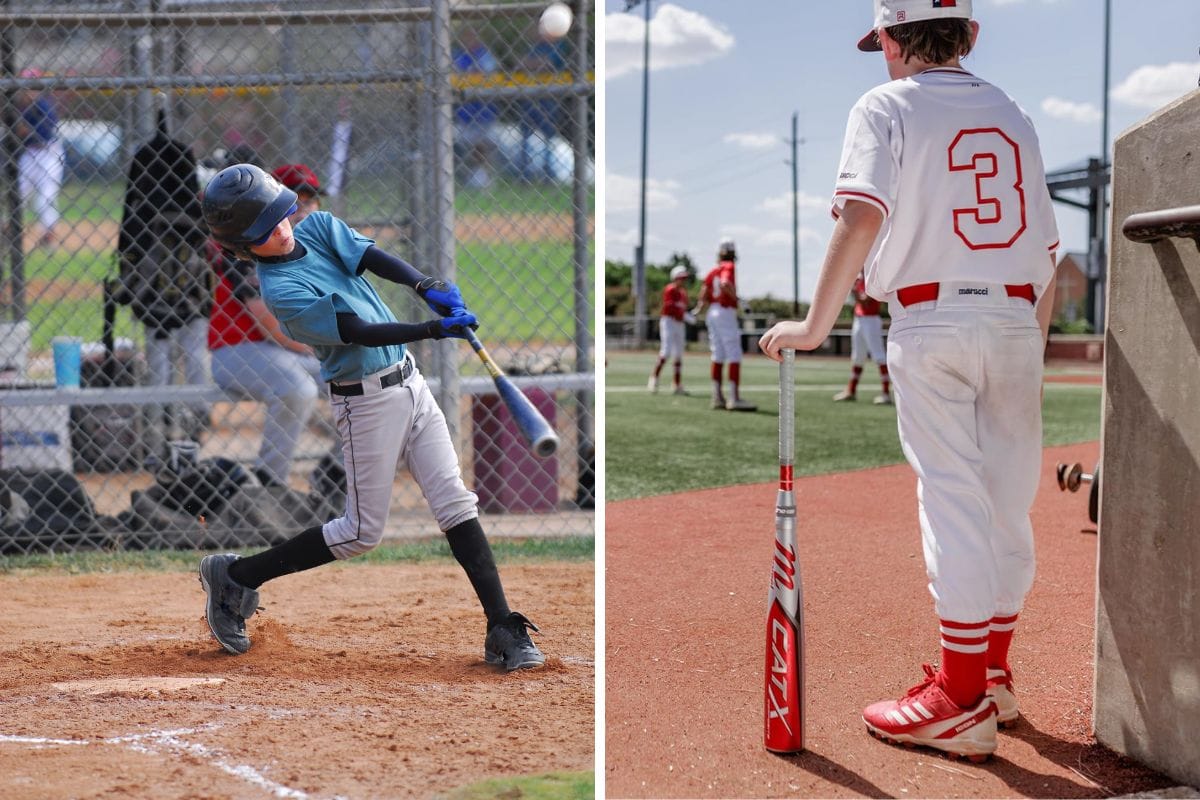Are you in the market for a new baseball wood bat but unsure about whether you should go for a cupped wood bat or an uncupped wood bat? Look no further! In this article, we'll explore the key differences between these two types of wood baseball bats and help you choose the one that best fits your needs. So, let's dive in!
Table of Contents
- Definition Of Cupped and Uncupped Wood Baseball Bat
- The Difference Between Cupped and Uncupped Baseball Bats
- Which Wood Bats to Choose
- Advantages
- Pricing
- SwagScale Conclusion:
- FAQs
Definition Of Cupped and Uncupped Bats
First, let's define the terms of a wooden baseball bat. A cupped baseball bat is one that has a small, concave indentation on the top of the barrel end of the bat. This indentation, which is typically about an inch deep and an inch wide, removes some of the weight from the end of the bat and shifts the balance point closer to the handle. An uncupped bat, on the other hand, has a solid barrel end without any indentation.

The Difference Between Cupped and Uncupped Baseball Bats
Cupped baseball bats have a smaller diameter at the end of the barrel compared to their handle. This “cup” shape removes some of the weight from the end of the bat and puts it towards the handle. This design reduces the moment of inertia, making it easier to swing the bat faster.
On the other hand, a wooden bat that is uncupped has a consistent diameter throughout the length of the barrel. They are heavier towards the end, giving them greater momentum and power. These bats are ideal for players who are looking to hit the ball farther.

Which One to Choose
When choosing between a cupped and uncupped bat, it depends on your playing style and goals. If you want a bat that you can swing faster, a cupped bat is perfect for you. The reduced weight at the end of the barrel will allow you to get around on pitches faster. This is especially important for hitters who like to make contact with the ball frequently.
On the other hand, if you want a bat that can give you more power(further ball flight), then an uncupped bat should be your choice. Since these bats have more weight at the end of the barrel, they can generate more momentum when you swing. This means that when you make contact with the ball, it will travel further.

Advantages
One of the biggest advantages of a cupped bat is that it can be lighter and more balanced than an uncupped bat of the same length. This balance point shift can make a big difference in swing speed and control, particularly for younger or smaller players who may struggle with heavy or poorly balanced bats.
Additionally, since the weight is concentrated near the handle, cupped bats can be easier to control and produce a smoother, more consistent swing.
However, it's worth noting that cupping a bat can also weaken it. Removing portions of the barrel end can make the bat less sturdy, particularly if too much material is taken off or if the bat is made from a weaker wood variety.
Some coaches or players may also prefer the solid feel of an uncupped bat, especially at higher levels of play where the players are stronger and more experienced.
Another factor to consider is the "sweet spot" of the bat. The sweet spot is the area of the barrel that produces the best contact with the ball and results in the most power and accuracy.
Some players may find that a cupped bat's sweet spot is smaller than that of an uncupped bat due to the concavity of the barrel end. However, others may argue that the sweet spot is actually larger on a cupped bat since the balance point is closer to the handle and allows for more consistent swings.
Pricing
In terms of pricing, cupped bats can sometimes be more expensive than uncupped bats due to the added manufacturing process. Additionally, certain leagues or organizations may have rules about the use of cupped bats, so it's important to check with your coach or league official before making a final decision.
SwagScale Conclusion:
So, which bat should you choose – cupped or uncupped? Ultimately, the answer depends on your personal preferences and needs as a player. If you're a younger or smaller player, you may benefit from the lighter weight and improved balance of a cupped bat.
However, if you're a more experienced player or prefer a solid feel, an uncupped bat may be the better choice. Consider factors like sweet spot size, pricing, and league regulations before making your decision. Happy swinging!
Your Bat Guru,
Ray
Best Work From Home Program That is Cheap and Actually Works!👇


FAQs
Are cupped bats better than uncupped ones?
Both cupped and uncupped bats have their own advantages. Cupped bats are lighter at the end of the barrel, making them easier to swing. Uncupped bats have more weight at the end of the barrel, allowing for more power when you make contact with the ball. The choice between the two depends on your playing style.
Do cupped and uncupped bats have the same balance?
No, cupped and uncupped bats do not have the same balance. Cupped bats are lighter at the end of the barrel, making them more balanced towards the handle. Uncupped bats are heavier towards the end of the barrel, making them less balanced towards the handle.
Are cupped bats easier to swing?
Yes, cupped bats are easier to swing. The reduced weight at the end of the barrel reduces the moment of inertia, making it easier to swing the bat faster.
Are uncupped bats more powerful than cupped bats?
Yes, uncupped bats are more powerful than cupped bats. The extra weight at the end of the barrel generates more momentum when you swing, allowing for more power when you make contact with the ball.










